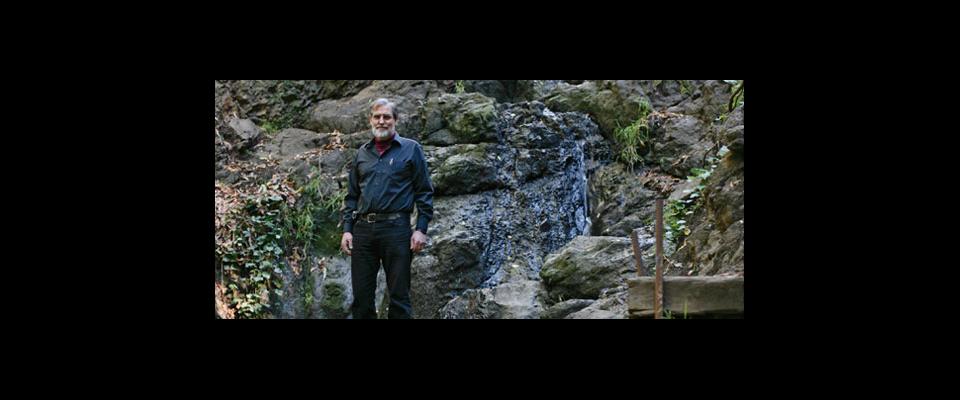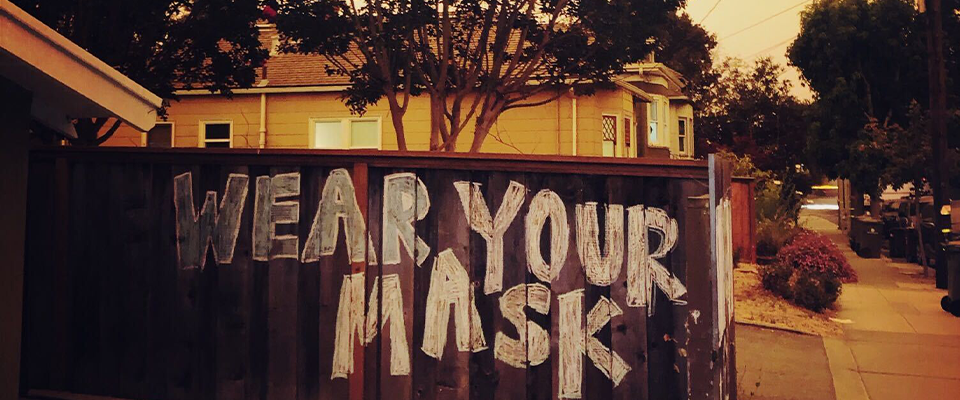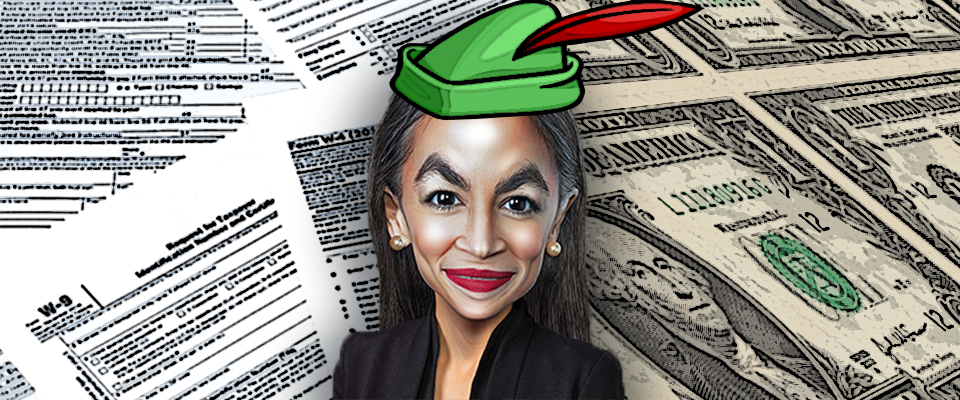Economist Richard Norgaard decries the gospel of endless growth.
If you’ve been paying attention to the economic news you’ve probably noticed pundits using an ecological metaphor: Green shoots are sprouting. It’s a nice image. First the blackened earth of economic collapse, then tender leaves of recovery pushing up from below. If they said instead that we were seeing the early signs of infection, that wouldn’t work so well. Economic growth is never portrayed as the vine that strangles, the multiplication of locusts—it’s always the heroic sprout. The metaphor must jibe with an assumption so fundamental that few stop to consider it: Growth is good.
A minority faction of economists, however, is warning that our struggle to get out of the economic quicksand uses the same thinking and the same assumptions that put us in the quagmire in the first place. Berkeley professor Richard Norgaard ‘65 is one of the founders of this subdiscipline, known as ecological economics. Uniting the group is the contention (uncontroversial to ecologists but almost heretical to economists) that unchecked growth is a recipe for collapse. As the late Kenneth Boulding, once the foremost ecological economist in the United States reputedly said, “Anyone who believes exponential growth can go on forever in a finite world is either a madman or an economist.”
Today, students of economics generally learn that growth is essential to the health of a society, but Norgaard argues this wasn’t always the case. “Growth wasn’t that important until we were racing the Soviets,” he says. A few years before Khruschev promised to bury us economically, the United States was growing at 3 percent a year while the USSR was growing at 8 percent. When cold warriors projected that trend out a couple of decades the threat of burial looked very real. As a result, says Norgaard, the goal of economics shifted: It became an unending contest rather than a journey to some prosperous end point. But the drive for growth is not a law of nature, Norgaard insists—it’s the artifact of an outdated ideology.
Now we find ourselves caught in the middle, between financial and environmental crises: Economists tell us that prosperity requires consumption and growth; natural scientists warn that environmental sustainability requires us to consume less. Perhaps the ecological economist Norgaard, with knowledge of both fields, can reconcile this impasse.
When he was an undergraduate at Berkeley in the early 1960s, Dick Norgaard worked as a raft guide. The summer of his freshman year he took legendary environmentalist David Brower down the Colorado River. It was an emotional trip for Brower, who as executive director of the Sierra Club was engaged in a public-relations battle with the Bureau of Reclamation over a proposed dam on the Green River, inside Dinosaur National Monument. To stop that project, Brower agreed not to fight another one: the Glen Canyon Dam, to be built just upstream of the Grand Canyon. When Norgaard took Brower through Glen Canyon—the achingly beautiful landscape he had just sacrificed to development—Brower was so moved that he chartered seven more trips with Norgaard so he could document what was about to be lost. Brower would later say he felt responsible for the “death” of Glen Canyon, and he spent the rest of his life trying to right that wrong.
Those canyon days radicalized Norgaard. As he and Brower hiked the slick rock and talked, the young undergrad became more and more angry at a system that could rationalize flooding such a place. Entering Cal, he had wanted to embark on a field of study that would allow him to spend time in the wilderness—geology or biology. Now he saw things differently: He decided to study the species that was destroying these hallowed places, and the forces that drove them to do so. “We are Homo economicus,” he says.
nt to graduate school, first at the University of Oregon and then at the University of Chicago—it was there, at the center of free-market orthodoxy, that Norgaard cultivated the seeds of his heresy. He’d read the influential book Scarcity and Growth by Harold Barnett and Chandler Morse, which claimed that natural resources couldn’t possibly be running out because they were getting cheaper. “The reasoning is that if it’s cheaper it’s more abundant,” Norgaard says. “Well, cheaper may just mean that we’ve learned how to suck the straw faster.”
Not long after Norgaard got a job at Berkeley in the Department of Agricultural and Resource Economics, the entomologist Robert van den Bosch ‘43, Ph.D. ‘50, strode into his office, banged a fist down on his desk, and declared, “We need an economist.” Van den Bosch was trying to show that farmers could use fewer pesticides. Norgaard agreed to help, and he published a paper in 1975 that showed that farmers who hired an independent pest-control expert had higher profits and used half as much pesticide as those who relied on the advice of agri-business representatives. It struck a nerve.
In the wake of Rachel Carson’s Silent Spring, a contingent of entomologists led by J. Gordon Edwards of San Jose State, had taken it upon themselves to defend pesticides. Edwards (who regularly ate DDT at lectures to prove its safety) personally attacked Norgaard’s paper and soon word spread that a senior Berkeley entomologist had proclaimed at a party that Norgaard would get tenure over his dead body. Indeed, Norgaard was not promoted to full professor until he moved to the interdisciplinary Energy and Resources Group at Berkeley. Gordon Rauser, the head of the Department of Agricultural and Resource Economics at the time, says Norgaard simply didn’t have the publications necessary for promotion.
If anything, the academic politics only made Norgaard more radical. He further astounded colleagues by denouncing economics as a secular religion, the dominant ideology of modern times. “It has a set of dogmas that can’t be questioned, a mythology that explains phenomena and your place in the world, and it provides a means of transcendence—in that one can ascend to higher levels of consumption, respect, power. What else do you need for a religion?” Economics, says Norgaard, offers its own system of morality, according to which the decisions we make in our own interest conveniently end up being what’s best for the world. “Surely this publicly sanctified counter to following the Golden Rule must be thought of as a religious force as well.”
Recognition was slow at home, but elsewhere there was a growing demand for people who could mesh idealistic environmentalism with hard-nosed economics, and Norgaard became a kind of wunderkind on the national and international stage. In 1971, at the age of 27, he was already advising Richard Nixon as part of the President’s Council on Environmental Quality. Since then he has served on a dozen panels and consultancies: to the Environmental Protection Agency, the United Nations, the National Academy of Sciences, USAID, the California Bay-Delta Authority, and others.
More recently, he assisted in the UN-organized Millennium Ecosystem Assessment and worked with the Intergovernmental Panel on Climate Change (IPCC), which shared the 2007 Nobel Peace Prize with Al Gore. R. K. Pachauri, the leader of the IPCC, calls Norgaard a pioneer and an outstanding economist.
Most economists, however, have never heard of Norgaard. Though he is prolific, he says he has almost given up on submitting papers to the leading economics journals, instead publishing his articles in places like BioScience, Conservation Biology, and Ecological Economics, the journal of the subdiscipline he helped to form. Yet there are signs that Norgaard and his fellow interdisciplinarians are now emerging from the shadows. This year, a relative outsider—indeed, a political scientist—Indiana University’s Elinor Ostrom, won the Nobel Prize for economics (sharing the honor with Berkeley’s Oliver Williamson), shocking many in the field. Though Ostrom may have been unknown to many economists, she was no stranger to Norgaard. In fact, she serves on the editorial board of Ecological Economics, and the two have collaborated on a number of papers.
Even if most mainstream economists haven’t been reading those articles, the world’s environmental and fiscal crises are now giving Norgaard and his peers in ecological economics greater exposure and wider acceptance. As an example, the once-controversial contention that gross national product doesn’t adequately measure quality of life is now widely accepted. “Richard was there a long time ago,” his old department head Rausser says. “He was the voice in the wilderness.”
I asked Norgaard if we could meet somewhere meaningful to him to talk for this piece. He teasingly suggested I take him to Brazil’s Amazon or to Alaska (where he helped with oil-pipeline planning and made the first raft descent of the Tatshenshini River) or best of all to Glen Canyon (where in 2004 a New York Times writer caught him wiping away tears at the sight of the Cathedral in the Desert—a massive amphitheater in the curving canyon walls—buried up to its knees in 40 feet of silt trapped by the Glen Canyon Dam). We compromised on Point Lobos near Monterey, and a few weeks later stood on a bluff, looking down at otters in the green-watered grottos. Norgaard had chosen the spot because it was a favorite of Boulding, the late economist whose idea that the full complexity of evolutionary theory could apply to economics had profoundly influenced Norgaard’s own thinking.
I was trying to get Norgaard to pin down his critiques in simple terms and to explain how the world might change if mainstream economists took them seriously. “We really need a major shift in what we’re doing,” he told me. “But rather than talking about market failure we’re talking about how to work within the market and make it better. If you are on the wrong path, optimizing doesn’t help a lot.” Then what’s the right path? We already know what we need to do, he said: Burn fewer hydrocarbons, slow the release of new chemicals out into the world, have fewer children, and narrow the gap between the rich and the poor.
The devil, however is in the details, whether you are dealing with conventional wisdom or radical thought. Take that last point for example: Economic equality sounds good until you realize that, as a resource-guzzling American in a world of increasingly scarce resources where poverty is the majority condition, equality means you would have to become poorer to even things out.
He sighed. “That’s the problem. It’s so difficult, it’s almost taboo to talk about at these international conferences. What leader wants to tell the people they are going to have less from now on? But we’ve been getting more for decades, and it doesn’t make us any happier.” John Stuart Mill predicted 150 years ago that at some point we’d decide to stop growing, Norgaard said, and “work less and enjoy life more—be social, read, be artistic. Why would we want more? More material things, to be hawking and bargaining and producing…. Is that what it is to be human? In his day, it was just so obvious that economic activity was not an end, it was just a means … eventually we’d fulfill basic needs and we’d be able to live—really live! And somehow it transformed into ‘No, life really is about working and consuming.’ You get purpose in life going to the big box store.”
Even the people who agree that we should consume less, however, find that it’s incredibly difficult to do so. Norgaard knows he’s a case in point, and he can tick off his sins: He has four children. He drives an SUV (albeit a hybrid). He has a house in the Berkeley hills (a modest one). “I wouldn’t mind living in one of those places,” he said, gesturing to the high-rent properties overlooking Point Lobos and the ocean. “Pretty nice. Too many of them though.” Therein lies the paradox. Most of us would agree that fewer houses would improve the view, but we still want that view for ourselves.
The question then, is not what to change, but how to force these changes when they run so counter to our cultural (and perhaps biological) desire for more?
The idea that Norgaard offers for moving forward comes from the period he spent in Brazil as a fellow with the Ford Foundation. They were trying to give farmers a way to survive that would not consume the rainforest. But the meetings of technocrats and experts took place far from the farmers they were trying to help. When Norgaard suggested that they visit to look for “the ground truth” in the Amazon, they scoffed. He went himself, and he discovered that what looked sensible from Brasilia was obvious madness from the perspective of the trabalhadores on the ground. For instance, the government had decreed that peasants must plant a certain kind of rice each year. The results were disastrous, and the farmers who survived were those who had disobeyed the mandate.
Norgaard began to question development, the idea that the poor needed big government projects to spur growth and bring prosperity. The drive to end poverty has always supplied the strongest argument for growth, but Norgaard witnessed growth making lives worse rather than better. He theorized that sustainable development came from groups working together and pushing from the bottom up, rather than top down.
Norgaard imagines these groups jostling against one another and adapting to each other like species in the kelp forests heaving in the swell below Point Lobos. It’s a vision of social change modeled after the co-evolutionary change we see in nature. Though people associate evolution with competition, every species also forms alliances to survive—you can see it close to home in the mutually beneficial relationships humans have formed with each other, with crops, with intestinal bacteria, even with the mitochondria that form the basic machinery of our cells.
I wanted to know how his vision differs from what we have now, with the hospital lobby and the unions and the corporations all going to Washington to battle it out or compromise. Norgaard shook his head. “To truly have a deliberative democracy you need more than representatives and lobbyists. You need the knowledge of truck drivers and farmers and construction workers. You need an education system that does more than train people to be workers, that empowers them to think deeply about the world they want to live in and join in the discussion.” As he and Elinor Ostrom have shown, there are many options between the extremes of government control and laissez-faire.
I have a grand plan. His big idea instead is a process. Ending the stand-off between economics (consume more) and natural science (consume less) would require several million conversations in city halls and neighborhood centers, in coffee¬shops and corporate retreats, conducted over fences between neighbors and over borders between nations. That’s the kind of cooperation we will need, Norgaard says, if we are to find a way to decouple prosperity from environmental destruction.
When I’d asked more mainstream economists about ending growth, they’d generally laughed. That would force a tough choice: Do we accept a lower standard of living or stop population growth? No one wants the former, and the latter all too easily leads to racist or totalitarian solutions. Instead, they argue, we can rely on innovation to outpace resource depletion. As a species we’ve always managed to think our way out of scarcity. Of course, most economists agree that exponential population growth can’t continue forever, but they also think it will eventually stop by itself. Norgaard concedes this could happen, but worries that by the time population growth reaches an organic limit, the future will look more like Blade Runner than The Jetsons. And he notes that though we have managed to innovate our way out of scarcity so far, there are plenty of examples of civilizations that have lost the gamble.
At this point we know that our innovations, for all the good they have brought, are also making the world worse in ways more tangible than the loss of Glen Canyon. The World Health Organization has estimated that climate change is already causing 150,000 deaths a year. Obama’s top science advisor, John Holdren (a former compatriot of Norgaard’s in Berkeley’s Energy and Resources Group), has noted that a mid-level projection from the IPCC predicts average temperatures in 2050 higher than anything in 130,000 years, and average temperatures in 2100 higher than anything in 30 million years, when sea levels were 65 to 100 feet higher.
The only proven way for a nation to bring down carbon emissions is to fall into a recession. Norgaard is not in favor of recessions, but he does say it’s time for us to decide what we truly value and what we can sacrifice. He doesn’t trust the invisible hand or miraculous technology to save us. Instead, he lays his hope on that most fragile of human qualities—our capacity to learn, and work, together.





















